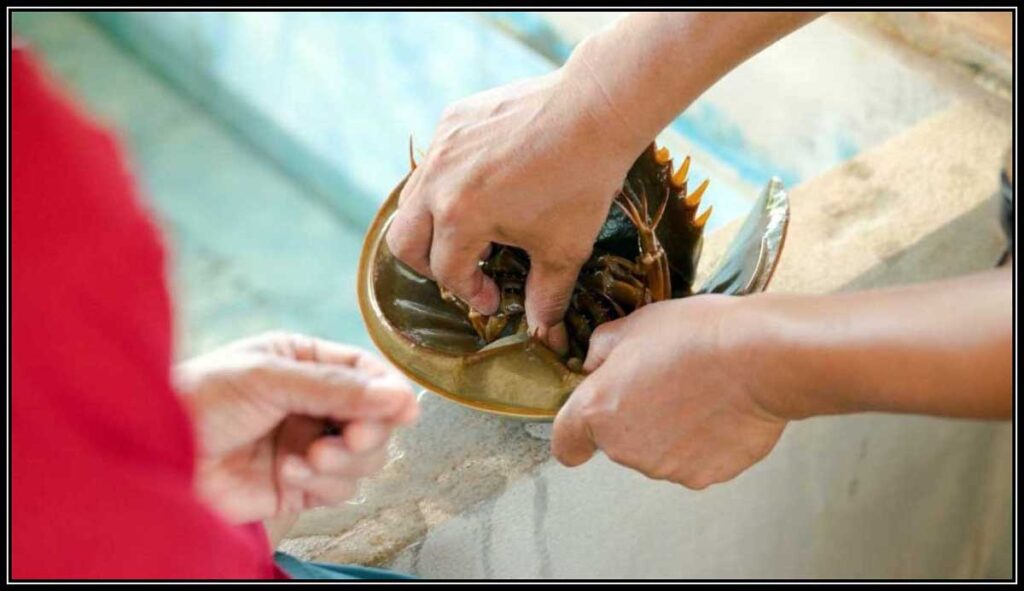Table of Contents
Do crabs have blood? This is a question that many people ask, and the answer is easy. Yes, crabs have blood.
But it’s not like human blood. There are a few fantastic things you want to know about crab blood.
Let me talk about some crab biology here.
Read More:- Do Crabs Have Bones?
Do Crabs Have Blood?
Crabs do have blood, but it is not red like ours. Instead, their blood colors can vary because their blood contains a high level of hemocyanin which turns to other colors when it comes into contact with oxygen.
Why Is Crab Blood Blue?
Crab blood contains a higher level of hemocyanin than human blood, which is why it appears blue. When crab blood is exposed to oxygen, the hemocyanin molecules bind to the oxygen and change color.
The hemocyanin in crab blood is different from the hemocyanin in human blood. The hemocyanin in crab blood binds to oxygen better.
This color change is what gives crab blood its striking blue hue.
Hemocyanin is a copper-based protein that gives their blood its distinctive color. While humans use iron to carry oxygen in our blood, crabs use copper.
This makes their blood less efficient at carrying oxygen, but it also makes it more resistant to freezing.
Do All Crabs Have Blue Blood?
All crabs have different colored blood, but the horseshoe crab has blue blood.
The blue blood of those crabs comes from a protein called hemocyanin, which contains copper. This gives crabs’ blood a blue color when it is oxygenated.
However, when crabs are deoxygenated, their blood appears green. So, depending on the amount of oxygen in their blood, crabs can appear to have either blue or green blood.
Interestingly, crab blood is also used in some traditional medicines.
Some people believe that crab blood can help to improve circulation and skin health.
Why Is The Horseshoe Crab Blood Blue?
Horseshoe crab blood contains a higher level of hemocyanin than human blood, which is why it appears blue. When crab blood is exposed to oxygen, the hemocyanin molecules bind to the oxygen and change color to blue.
What is the purpose of horseshoe crab blood?
Horseshoe crab blood is special because it contains a unique substance called Limulus Amoebocyte Lysate. This substance is used in horseshoe crab blood tests, which are used to detect bacterial contamination in medical equipment and supplies.
The horseshoe crab blood test is essential because it helps ensure that medical products are safe for humans. Horseshoe crab blood is also used in research to study the immune system.
Horseshoe crab hemocyanin has properties that make it useful for these studies.
Why Do Some Animals Have Blue Blood?
One of the most surprising things about blue blood is that it isn’t blue at all. In fact, blue blood is actually red. So why is it called blue blood?
The answer has to do with the way light reflects off of it. Red blood contains a protein called hemoglobin, which helps carry oxygen through the body. When hemoglobin is exposed to oxygen, it turns red. But when less oxygen is present, the hemoglobin takes on a blue tint. That’s why blood appears blue when seen under certain conditions, such as in a vein.
So why do some animals have blue blood? There are a few reasons. One is that blue blood can help to regulate body temperature. Animals that live in cold climates often have blue blood because the blue color helps to reflect heat and keep them warm.
Another reason is that blue blood can help to protect against disease. Some animals have immune systems that produce blue blood cells, which can help to fight off infection.
Finally, blue blood can be an adaptation that helps animals survive in low-oxygen environments. For example, some fish live in deep water with little oxygen. These fish have evolved to have blue blood, which helps them take in more oxygen and function better in low-oxygen environments.
Animals With Blue Blood
Most animals have red blood due to the presence of hemoglobin. However, some animals have blue blood due to copper-based proteins like hemocyanin.
Animals with blue blood include lobsters, crabs, pillbugs, shrimp, octopus, crayfish, scallops, barnacles, snails, clams, squid, slugs, mussels, horseshoe crabs, and most spiders.
While blue blood may seem strange to us, it actually has some advantages over red blood. For example, blue blood is more efficient at transporting oxygen than red blood.
In addition, blue blood is less likely to clot than red blood. As a result, animals with blue blood have a distinct advantage in survival.
FAQ
How much blood does a crab have when it’s fully grown?
A crab’s blood is typically between 0 and 400 mL, depending on the size.
Is blue blood present in all crabs?
Yes, most of the crabs have blue-shaded blood. The blue color results from a copper-containing protein called hemocyanin, which is present in the blood of many invertebrates.
Do crabs bleed?
Contrary to popular belief, crabs do bleed.

